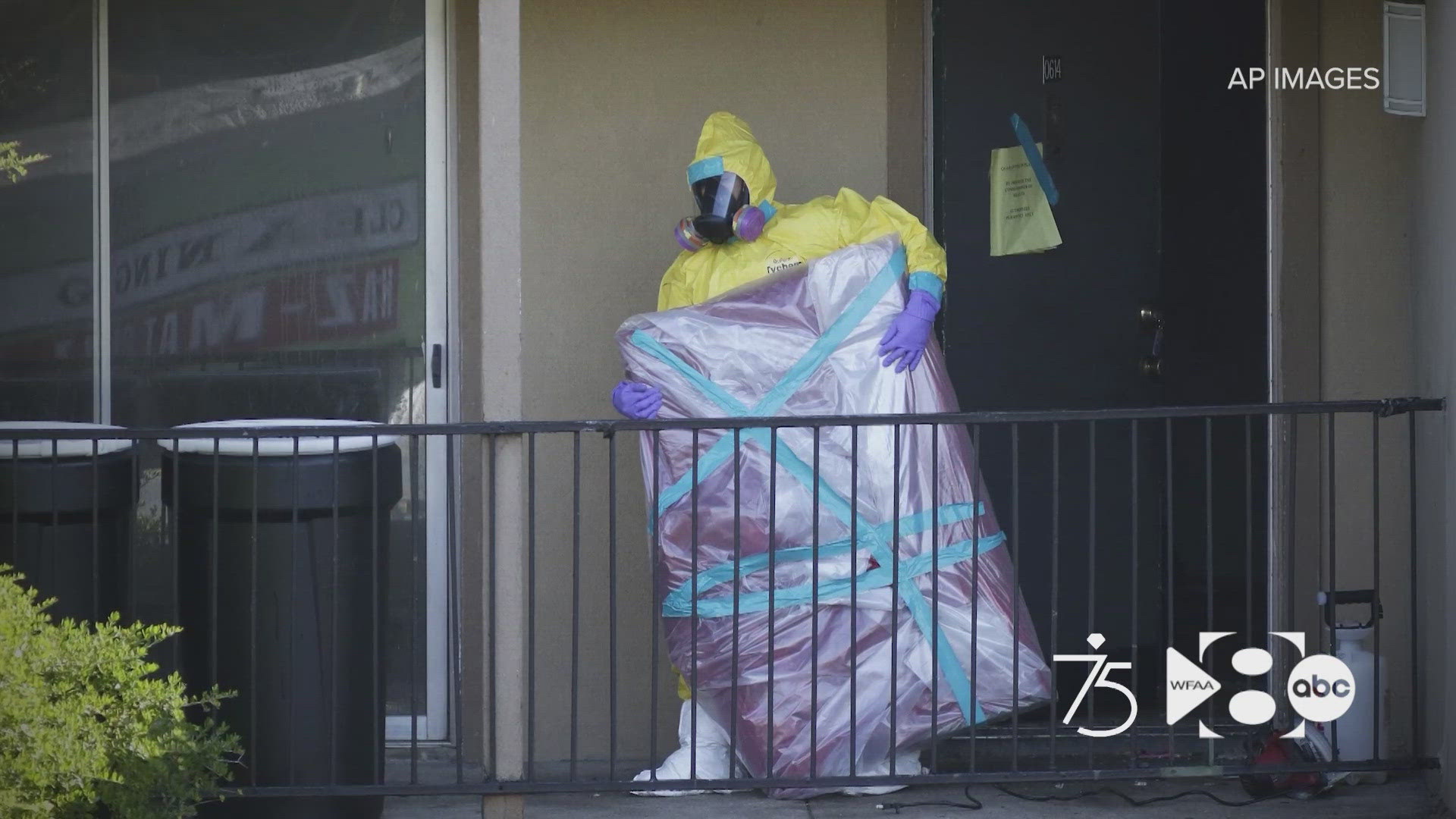DALLAS — It’s hard to believe nearly 10 years have passed since the Ebola outbreak put Dallas-Fort Worth at the center of global attention. The virus that ravaged West Africa was suddenly on our doorstep. In late September, the world watched as the first U.S. case of Ebola was confirmed in Dallas. Thomas Eric Duncan, a man from Liberia, had entered the States in hopes of connecting with his fiancé Louise Troh, and building a new life.
Janet St. James, then WFAA’s senior health reporter, was on the front lines of the media response. "I knew when I was breaking it that it was going to be a big deal,” she recalls. “It was all Ebola, all the time."
At the time, there was widespread panic. Some schools had emptied as parents feared sending their kids. People with even mild symptoms were rushed to hospitals, terrified they had the virus. At the end of the day, only three people had contracted the virus but the attention and news coverage seemed like there were so many more.
"There were only 3 Ebola patients in Dallas," St. James reminds us, "but for many, it felt like hundreds, even thousands."
"It was the longest deployment on a public health emergency we had until then," said Dallas County Judge Clay Jenkins. He worked closely with the state and CDC to lead the local response.
The crisis intensified when Duncan died just days after his diagnosis, and two nurses who treated him — Nina Pham and Amber Vinson — also tested positive.
"It was shocking," Judge Jenkins said. "A gut-check moment for all of us."
Pham and Vinson’s diagnoses triggered even more public fear. Families connected to the nurses were quarantined. Their belongings were disinfected or destroyed, while crews in hazmat suits worked inside and outside their homes.
"People blamed us for bringing Ebola to the country," said Stanley Gaye, a Liberian community leader in Dallas, who remembers the rush to judgment against the Liberian community.
Despite the chaos, St. James knew it was essential to report facts calmly and clearly. One of the first pieces of crucial information was to inform the public over and over about how Ebola was spread: through contact with bodily fluids such as blood. Initial symptoms include fever, headache, muscle pain, and chills.
"I felt a responsibility to provide rational, calm thought in the midst of what felt like chaos," she said.
Even years after the outbreak, lawsuits would be filed, and the trauma still lingers for some. The crisis would put a spotlight on the local response, hospital protocols, and the CDC. There was even talk of travel bans. Jenkins remembers the outcry from a fringe community asking to penalize Duncan and the family.
"I have no interest in criminalizing people for being sick," Jenkins said in response to calls to prosecute Duncan’s family.
But there were also small moments of hope, like Pham’s emotional reunion with her dog, Bentley, after they were both cleared of Ebola. Looking back, the outbreak in Dallas served as a learning experience for future public health emergencies, like COVID-19.

